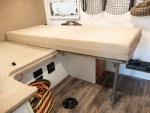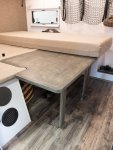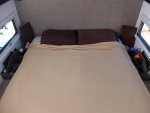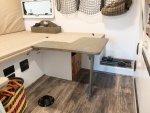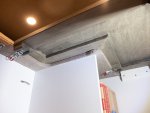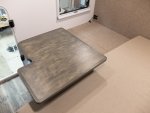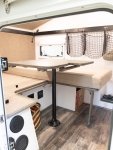Boy, just when I thought my wife and I were set on an OGT Pando 2.0 I come across the Teton X Hybrid. I have an email out to the folks at Teton X with some questions (lead times, spec and price sheet, some build questions) but maybe some owners here can provide some details as well. We currently live in the Midwest where it can get pretty hot and humid and having the 12v A/C option also opens up places to go while remaining comfortable. The OGT trailer has no wood, it's all metal or composite. Knowing the various conditions that the trailer could be exposed to, there being wood as part of the construction does worry me a bit. Someone had mentioned in a previous post that Teton X was thinking about going to composites but their site is pretty lacking when it comes to technical details.
Someone mentioned poplar being used, I'm assuming that's plywood and maybe some framing? Does anyone have details on the construction of the box itself?
At some point, my wife and I are planning on hitting the road for long periods of time and the trailer will likely see lots of temperature/weather extremes, from hot and humid summers to cold and icy/snowy winters. I want to ensure whatever we go with is going to be up to the task in terms of both durability and functionality. I don't want to have to worry about minor water intrusion or condensation leading to rot, mildew, etc.
Am I worrying too much about there being wood/plywood used as part of the construction? Is there any particle board used anywhere or is all of the wood plywood and framing materials?
It looks like they are (or were) using something like a 6 gallon RV water heater instead of an instant water heater? Is that still the case or is there an instant option?
With the Pando 2.0 we liked the galley layout and having the option of adding a second fridge to the tongue storage box, but the galley with the Hybrid looks well thought out as well, though galley storage seems to have suffered in comparison to the Pando 2.0, on the flip side there's a lot more space and functionality inside the trailer.
I also like that the pop-up portion doesn't have to be up to still comfortably be inside if it's really hot or cold and you want to keep it more closed up. Then if we one of our daughters with us she has a bed in the trailer rather than having to set up a bed in the back of my truck.
The newer side door looks to be the same as what the Boreas XT uses, they look well built but I didn't like that the door had to be completely open to use the screen. With the Hybrid I can see there are additional windows (options?) available so the door doesn't have to be open to have a breeze.
Has anyone looked at or seen both the Hybrid and Pando 2.0 in person? I'm really struggling with this decision now. Help!


